Nothing captivates an audience like a great story—no matter what industry you work in.
Storytelling has long been used to activate a reader’s imagination through an interactive narrative. Brand storytelling in particular uses this narrative to share company values while connecting customers to a company.
Marketers often employ brand storytelling in campaigns containing creative narratives, showcasing a brand or its product in more relatable, human contexts. This helps the audience see the company as more than just a faceless corporate entity building complex products–instead, a collection of real people solving real-world problems.
What Is Brand Storytelling?
Brand storytelling is a staple of B2C content marketing, but it’s less common in the B2B world. The reason is obvious—it’s more difficult to engage your audience emotionally when you’re selling complex solutions to businesses, rather than flashy products to individual consumers.
Storytelling may seem more difficult to pull off in the B2B world, but it’s no less effective. After all, 50% of B2B buyers are more likely to make a purchase if they connect to a brand on an emotional level.
Today’s post shines a spotlight on B2B brands that have used brand storytelling in unique, engaging, and innovative ways. Keep reading!
Examples of Brand Storytelling
1. Write with Classic Hollywood Elements – Hewlett Packard
HP’s video “The Wolf” tackles a topic that has the potential to seem dry and uninteresting: printer security. It’s an entertaining story that also makes viewers understand how vital HP’s printer security software can be.
Sure, you might not have the budget to feature Hollywood stars in your videos, but you can still learn a lot from HP’s unique approach to B2B storytelling.
https://www.youtube.com/watch?v=ZUP4ib5FzGs
HP’s “The Wolf” dramatically tackles printer security.
What makes this a great brand story?
This short film is incredibly engaging, as it creates a menacing character to represent the threats companies face if their printer security is lacking. Using classic good vs. evil storytelling with some movie magic presents your product in a more exciting way than it would on paper.
2. Show Off Your Star Employees – Microsoft
One of the largest companies in the world, Microsoft, is also one of the biggest advocates of storytelling as a brand-building tactic. Their Microsoft Story Labs platform highlights employees from every department within their company—from researchers to artists to video game developers.

What makes this a great brand story?
These in-depth profiles illustrate that Microsoft is not just a massive corporation, but a collection of unique and gifted individuals. Showing enthusiasm for your employees adds a more human element to your brand and an additional connection between brand, employee, and consumer.
3. Humanizing by Addressing Challenges – IBM
The multinational tech corporation has used storytelling to humanize their company for decades. Consider this TV spot highlighting struggles within the American education system and IBM’s efforts to improve schools across the country. The ad is over 20 years old, but still holds up today as an example of powerful brand storytelling.
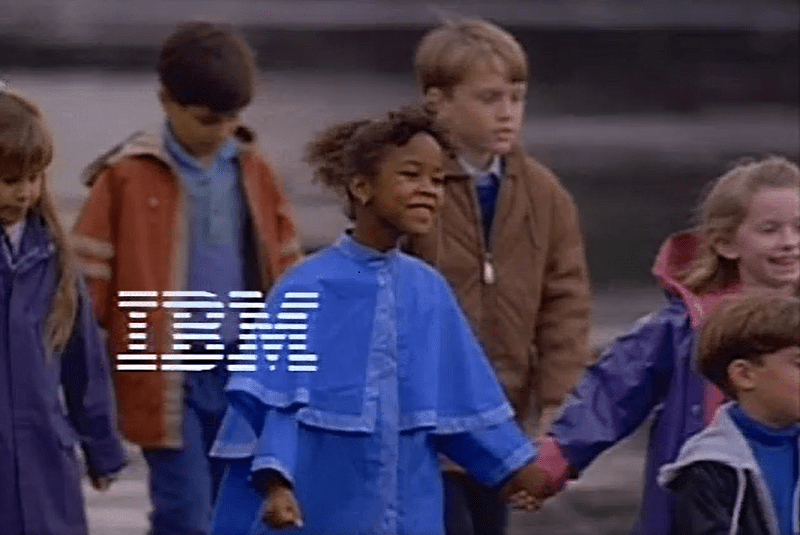
What makes this a great brand story?
Addressing real-world challenges and showing how IBM is a solution to them creates a sense of involvement with the audience’s everyday struggles.
4. Put a Spotlight on Local Businesses – Google
Google Ads is a web advertising service that most B2B marketers are already familiar with. Google created a video series called “AdWords Stories” that highlights small businesses that use the platform, conveying the life-changing impact it can have.
In this two-minute video, Google tells the heartwarming story of a local restaurant that used Google Ads (formerly AdWords) on its way to becoming a $14-million national mail-order business.
https://www.youtube.com/watch?v=sBuYjoPU4tM
Google tells stories of customers who use Google Ads to grow their business.
What makes this a great brand story?
Every local community has its heroes. Google makes the audience feel like they are part of a special story through communal efforts while showcasing their product.
5. Let Customers Tell Their Own Success Stories – Salesforce
The popular sales technology company specializes in a particular kind of brand storytelling: They allow their customers to tell their stories for them. Their Success Stories page follows clients who have used Salesforce to grow their businesses.
This is a tactic that can be easily replicated for your own business. Simply reach out to top customers and ask if they’re willing to talk about their success with your product—just as you would for a case study.
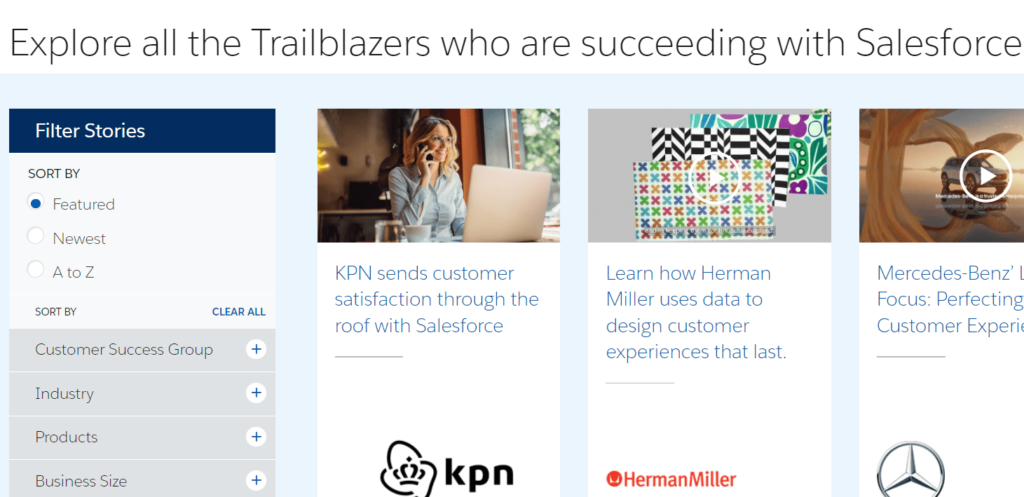
What makes this a great brand story?
The lesson here is this: Don’t underestimate the value of a good success story. In fact, 90% of buyers who read positive customer success content claim it influenced their purchasing decision (Wyzowl).
6. Use Different Visual Mediums – Cisco
Cisco is a cutting-edge technology company that develops networking and telecommunications equipment. Though their services are very complex, Cisco uses storytelling to humanize the advanced technology they offer to businesses.
One great example is Sea Change, a story of a racing yacht that gains a competitive advantage using a number of Cisco Powered technologies.
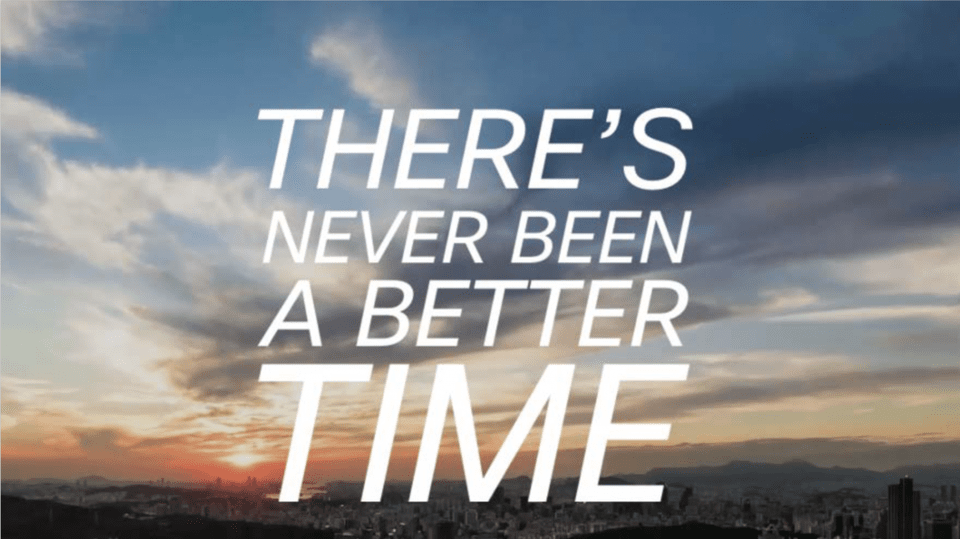
What makes this a great brand story?
Combining pictures, video, and a written narrative tells an exciting story that showcases the impact of the brand’s products. Following a story while exhibiting new technology creates an extra element of interactivity.
7. Share Company-Related News – Boeing
The aircraft technology manufacturer uses an old-fashioned form of storytelling to great effect—news articles. On its Features page, Boeing publishes in-depth news stories that report on their solutions and how they are used across the world.
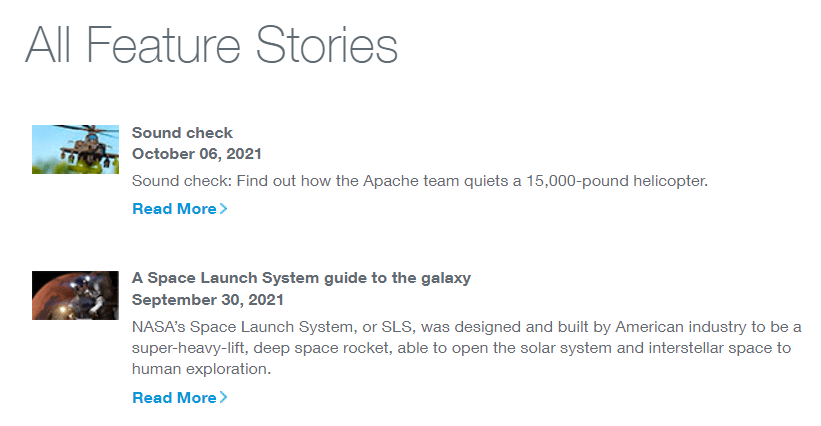
What makes this a great brand story?
These articles are informational rather than promotional, but succeed in building the Boeing brand by keeping their technology grounded in current events.
8. Utilize Social Media – General Electric
Visual storytelling can make highly-technical ideas appear more human and relatable—and there’s no better example than General Electric’s social media storytelling.
On their Instagram page, GE regularly posts captivating photos and videos that demonstrate how their complex projects have a tremendous impact on our day-to-day lives.

What makes this a great brand story?
Offering a glimpse into how products are made materializes that mysterious space between production and consumer usage.
9. Don’t Forget to Have Fun – ZoomInfo
Of course, we’d be remiss if we didn’t mention the many ways we have implemented storytelling in our own campaigns. Our extensive Customer Success page features detailed testimonials of customers who achieved growth using ZoomInfo.
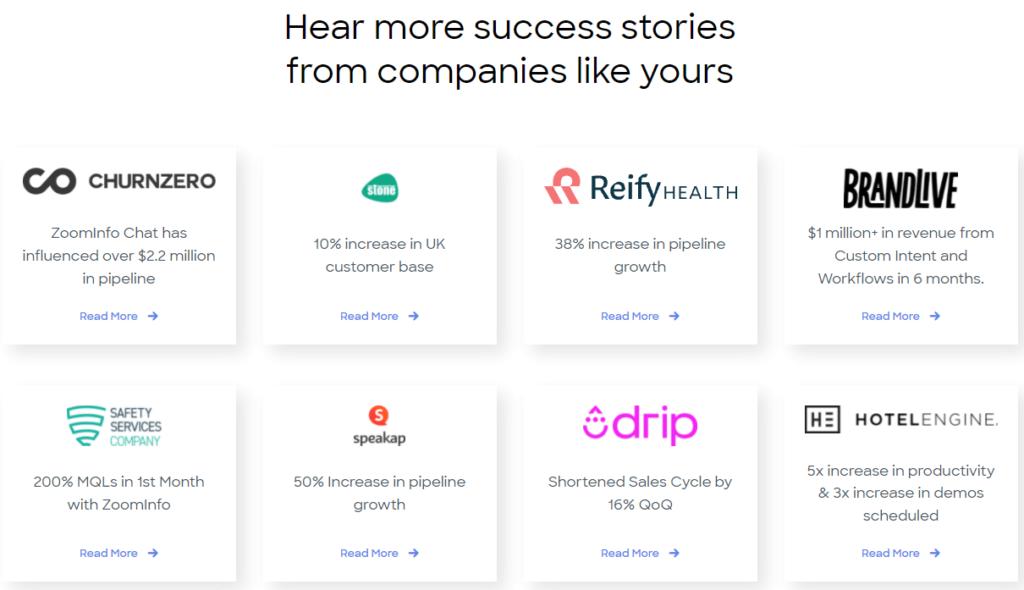
What makes this a great brand story?
Storytelling is a big part of the visual content we create, and some of the best stories come directly from our customers. But when we do our own storytelling, it gives a chance to show off our own creativity and ingenuity.
Key Takeaways of B2B Brand Storytelling
We hope these examples gave you some inspiration to make storytelling a bigger part of your brand marketing strategy. And remember, you don’t need a huge budget and a wealth of resources to make use of brand storytelling. Whether you’re a big or small business, you have stories to tell.
So, the next time you build out an elaborate marketing campaign, try thinking like a storyteller rather than a marketer. You might just discover a way to create a deeper connection with your audience. For more, check out our post on storytelling for sales.


